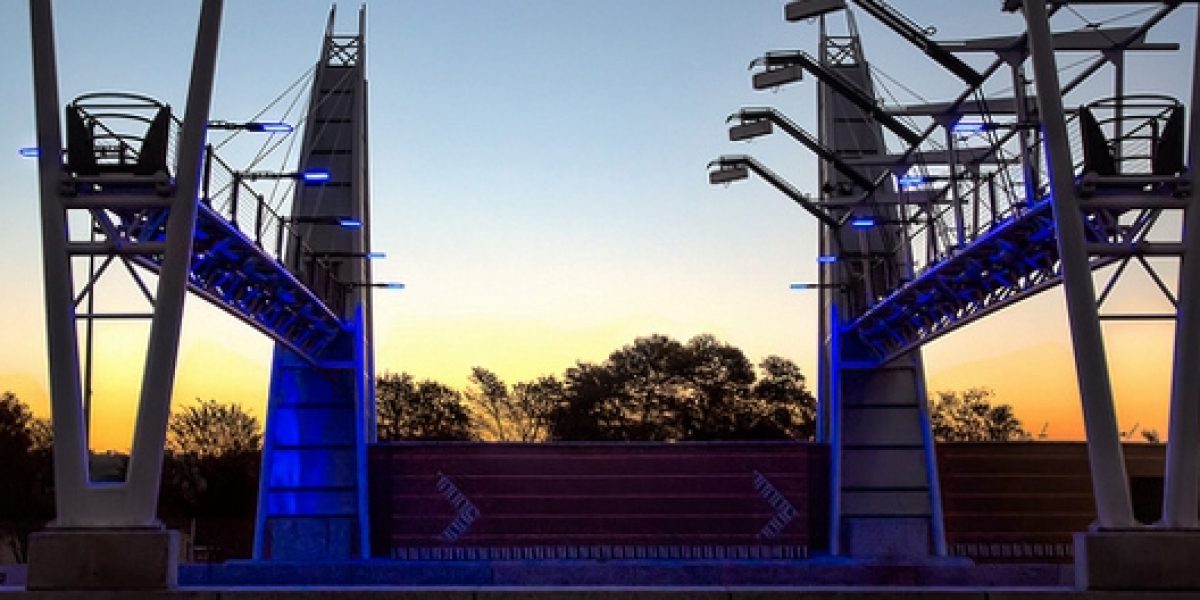This comes after the Supreme Court ruling only weeks ago allowing the City of Cape Town to fully disclose the details of the South African National Roads Agency Limited’s (SANRAL) concession award for the Cape winelands roads. The latter ruling highlighted that SANRAL has absorbed very little from the prolonged public disagreement over the GFIP e-tolling since 2011.
What can the South African government and SANRAL learn from the implementation of urban tolling systems in other developing countries?
Over the past four years, the e-tolling saga has met with consistent strong opposition and periodic protests in the streets, in the media and in the blogosphere. While toll roads have been a reality in South Africa for three decades, urban e-tolls are new. Major objections by pressure groups and commuters focus on the mode of collection, the associated high fees for users, concerns over privacy of information, the lack of genuine consultation prior to the project implementation and financing being presented as a fait accompli by government.
In 2011, a leading Johannesburg economics research house, Economists.co.za, found that toll fees for the GFIP were 106% to 228% higher than comparable international toll road projects. At that stage, the tariff for light motor vehicles was 66 cents per kilometre (c/km) with a 30% discount (amounting to 40 c/km) for e-tag holders. In 2012, former Finance Minister, Pravin Gordhan, approved a R5.7-billion allocation to lower tariffs for e-tag holders to 30c/km and placing a the monthly cap for e-tag users at R450 for light vehicles, R1,750 for medium heavy and R3,500 for large heavy vehicles. Other non-peak usage discounts were later introduced. In the latest announcement, monthly fees would be capped at 30c a kilometre and reduced from R450 to R225 for light vehicles.
E-toll financing and SANRAL’s troublesome debt
SANRAL’s model for financing toll roads is to issue bonds on the open market to fund the initial capital costs, interest on these capital costs, and the operations, maintenance, and future upgrades of the toll roads. SANRAL bonds to the tune of R24 billion were issued to cover the GFIP e-toll project’s capital costs, with capitalised interest of around R3.4 billion. In order for this financing model to work, however, investors have to believe that the project will generate future cash flows – in this case through e-toll revenue collection.
SANRAL has had to decrease their forecasted revenue collection from e-tolls due to an increasing trend of non-payment sparked by speculation among users that the e-toll project would be abandoned as a result of Gauteng Premier Makhura’s inquiry into the effect of e-tolling on Gauteng. Revenue collection dropped by 38% from July to November 2014, forcing SANRAL to drastically decrease its e-toll revenue forecast to R907 million from a previous estimate of R1.4 billion.
The sustainability of SANRAL’s debt is clearly in crisis, and this is affecting its ability to raise funding. On 19 January 2015, Moody’s changed SANRAL’s credit rating outlook from stable to negative, dropping the rating to Baa3. If investors are less interested in SANRAL bonds, and outstanding e-toll revenue collection is not legally enforced, SANRAL will have to rely on further state-backing to finance its debt.
SANRAL has an explicit guarantee on 74% of its debt, with the other 26% guaranteed by the national government. But as a wholly state-owned enterprise, the SANRAL-guaranteed debt would have to be financed by the South African tax payer anyway.
Lessons from Chile’s road infrastructure development programmes
South Africa is not the only emerging economy to implement tolling amidst protest from citizens.
Chile’s experience dates back to 1995 when the announcement of the 40 km Costanera Norte Urban Highway in Santiago caused widespread civil opposition. Informed by environmental concerns, the perceived secretive practices of the Ministry of Public Enterprises, and high fees for the electronic tolling system, resistance continued until the project’s inauguration in 2005 and the project went ahead only after heavy subsidisation from the government.
The ten-year long civil action campaign has led to the development of more rigorous models that consider both the environmental risks and real associated costs of toll roads. As a result, Chile is viewed as a developing-country example of successful private sector participation in road concessions – also by political leaders in South Africa. One of its more successful toll road projects was the Santiago-Valparaíso toll-road announced in 1998 which emphasised stakeholder engagement and had term flexibility with a minimum (12-year) and maximum (25-year) contract.
The Chilean government’s more transparent approach to sharing infrastructure plans and the installation of a sector regulator has created much greater acceptance of its concession programme. A citizen outreach program for Chilean public infrastructure projects has been initiated and the private sector is involved upfront in mitigating environmental and social impacts through better design and construction planning. A recent innovation includes further variability in toll prices based on congestion levels – with discounts for off-peak periods — from which South Africa has recently learned. It has taken time, but the Chilean government’s concession programme has begun to find acceptance amongst its people.
Road maintenance a priority – Can e-tolling in South Africa work?
Road infrastructure construction, maintenance and upgrade are vitally important for citizens to access health facilities, education, retail and trade amongst other activities. Roads are public assets, but the use of these assets has the effect of weakening them. Where fiscal priorities lead to government spending being unavailable for the necessary maintenance of roads, users should expect to be called on to contribute to their upkeep.
Advanced economy models are often not entirely compatible with an emerging-country context. A high technology solution in a country where approximately 13 out of 50 million are officially unemployed is not the best option when a community is unable to afford toll fees. SANRAL’s estimate of 20,000 jobs created during the construction period of the roadway seems insubstantial given the cost of the project. Moreover, its debt crisis is directly related to the lack of buy-in among users combined with civil disobedience to register their protest.
Proactive engagement and consultation with all stakeholders before, and during implementation allows for critical obstacles to be flagged well in advance.
Clearly, from the recent City of Cape Town legal encounter, there seems to be little direct consultation between the Roads Agency and the Ministry of Transport – let alone genuine discussion with the users directly affected by the implementation of the toll road.
In the Gauteng context, road users remain firm in their resolve that the gantries ought to be dismantled and the province face an uphill battle in convincing them otherwise. Some of the practical steps that it could take are to call for a longer period to repay the road upgrades and for appropriate costing models which would apply a transparent sliding scale for tariffs from various user types, times of the day and week, and seasonal travel.








